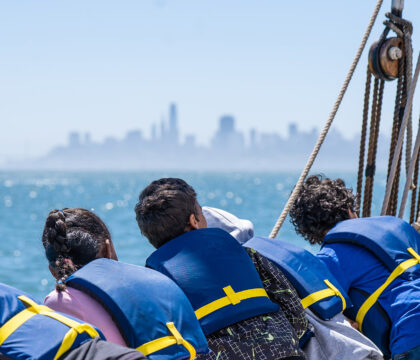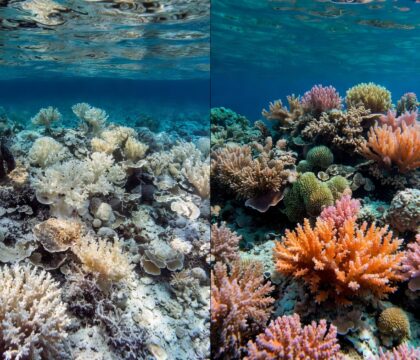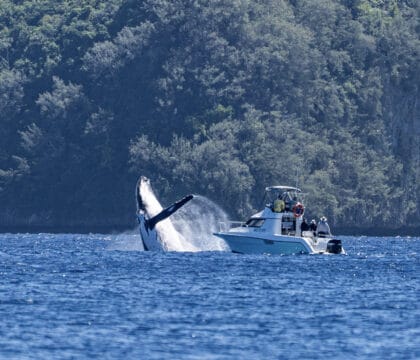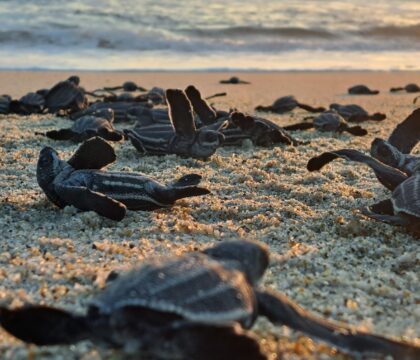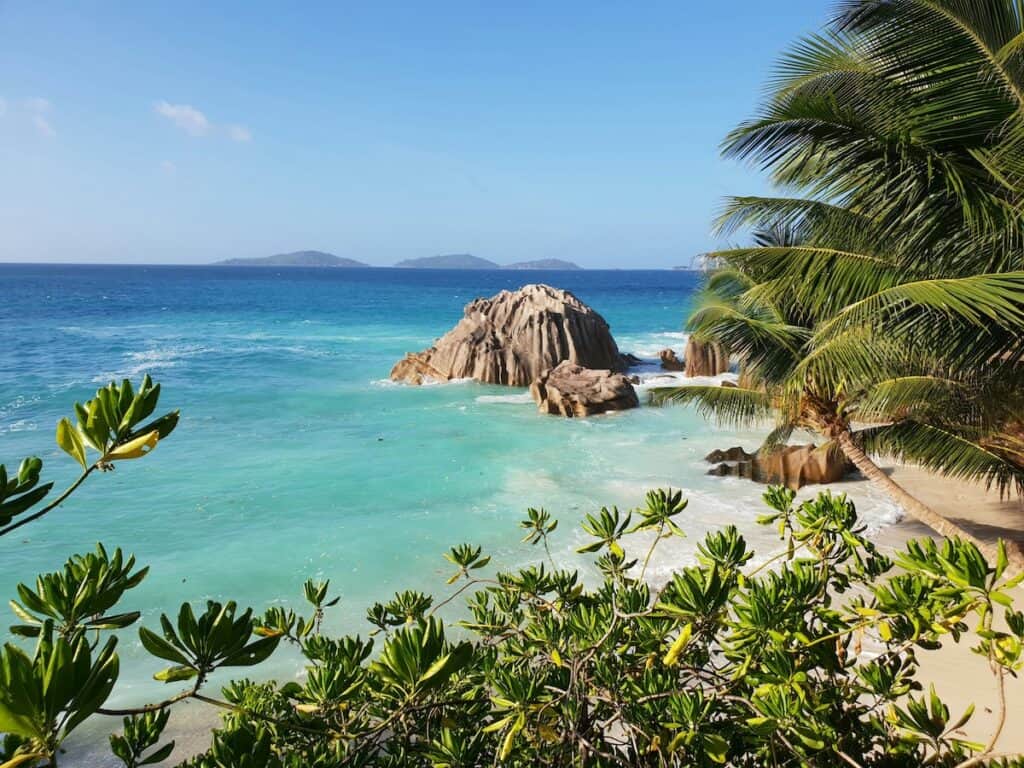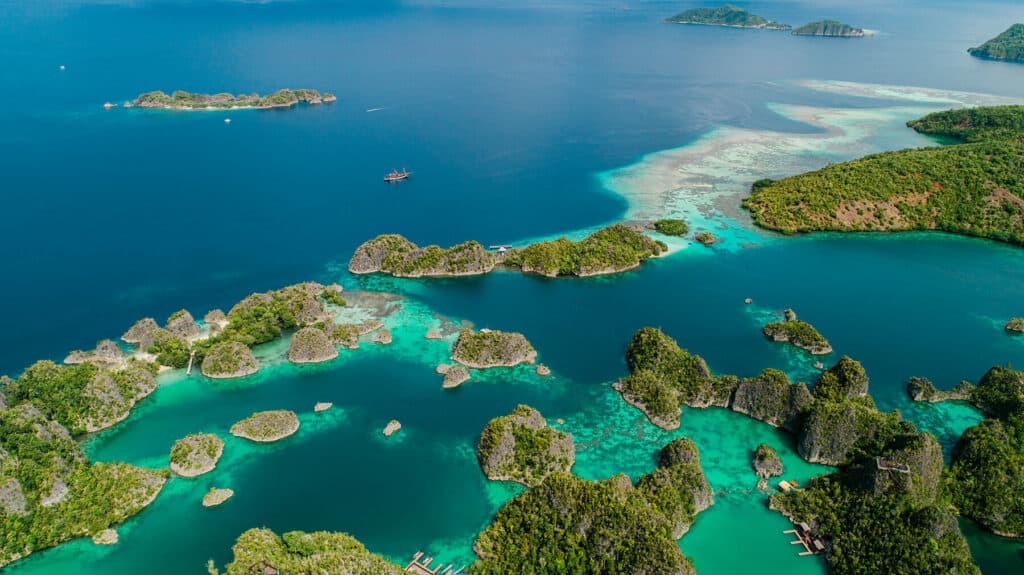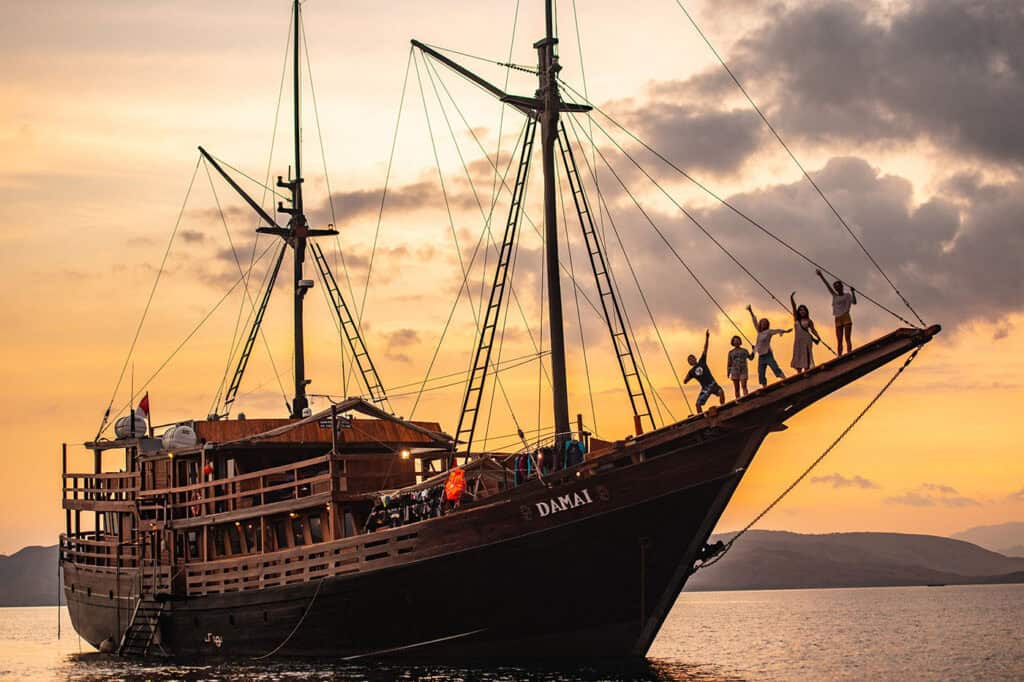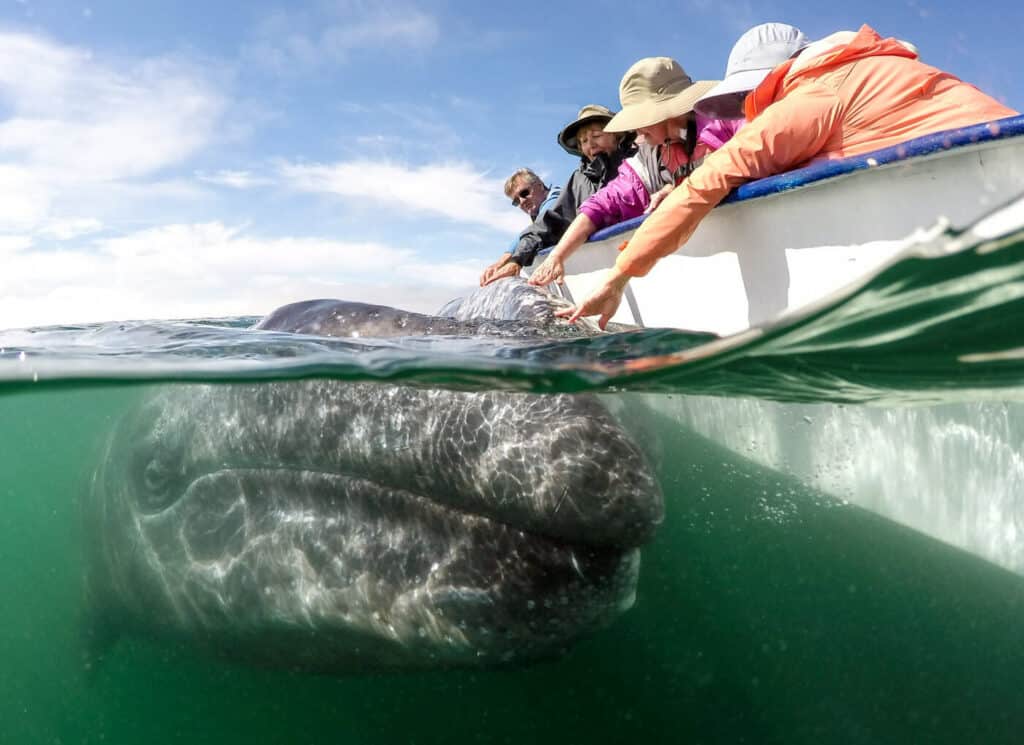June 7, 2014 • Trip Reports
At first it was just an ivory speck against an endless snowy backdrop on the eastern coast of Spitsbergen Island that took minutes to find even with binoculars. It grew in size as our boat slowly approached and by the time the longest lenses could capture the image, everyone on board was clinging to the bow rail to catch a glimpse. And we were not disappointed; it was a mother polar bear and her yearling cub.
A polar bear mother and cub in Svalbard. © Roderic Mast
In our comfort-controlled homes and offices, it can be difficult to fully appreciate global warming. The data and debates, zigzag charts of ever-increasing global temperature, predictions of disaster, and images of thawing tundra and rising seas co-mingle with the unfiltered cacophony of information that relentlessly bombards us from our TVs, radios, computer screens, and tablets. Global warming can feel abstract, distant, easy to ignore.
The UN estimates that by 2050 the Arctic summer ice pack will disappear entirely. © Roderic Mast
Not here. In the night-less Arctic days, surrounded only by the sound of gusting wind and a panoramic mosaic of sea ice, slush, and patches of deep blue ocean, it became viscerally obvious to my companions and me what global warming is doing to our planet—how it is impacting some of our more sensitive co-habitants and, ultimately, ourselves.
A Northern Fulmar against a backdrop of solid ice. The Arctic ice cap is the 2nd largest on Earth, after Antarctica. © Roderic Mast
That’s what this visit to Svalbard, Norway was all about for 16 Oceanic Society guests aboard the Lindblad National Geographic Explorer last month. We had signed-up to spend a week on the periphery of the second largest glacier on Earth, where the sun does not set, satellite signals are weak, and the noise of civilization is dim. There, a mere 600 miles from the North Pole, we experienced the sights and stories of the hardy extremophiles that inhabit these lands and sea—from 2 cm tall willow trees, to whales and guillemots, kittiwakes and krill, and the icons of the Arctic and flagships for climate change: polar bears.
Walrus also rely on sea ice, on which they often rest. © Roderic Mast
As sea ice melts, polar bears must swim ever greater distances. © Roderic Mast
Svalbard is one of the best, and last, places on the planet to view polar bears in their natural ice floe habitat where they prey mostly on the blubber of ice-living seals in a boom-to-bust fashion that can leave them without food for months between kills. Polar bears were hunted in Svalbard for a century until Norway’s ban in 1973, thus removing the direct deadly impact of humans and making the animals more approachable than in Greenland or Canada where they are still hunted. But human-caused global warming remains their greatest threat throughout their range, because it diminishes the summer ice pack a little more each year, forcing the bears to swim greater and greater distances.
In a story that made global headlines in 2011, a mother-cub pair of polar bears were spotted swimming for nine days across the Beaufort Sea before reaching an ice floe more than 687 km (426 miles) away. The female lost a fifth of her body weight and the life of her cub in that epic swim. And such stories will likely become more frequent as the ice melts. Norway is seeing its hottest days now since the beginning of recorded temperatures in 1900, and the UN estimates that by 2050 the Arctic summer ice pack will likely disappear entirely.
We were lucky to have seen the mother and cub we spotted that day. That life-changing experience brought us closer to the reality of global warming, and will fuel changes in our behavior and allow us to be better ambassadors for change among others.

